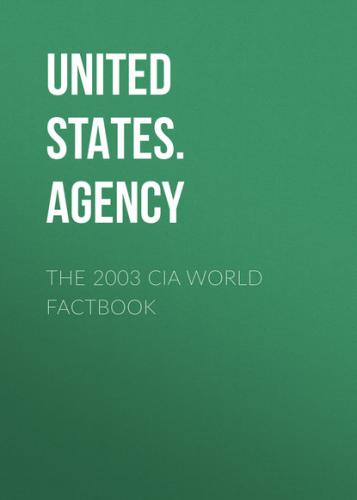Abkhazia region of Georgia together with a UN military observer
group; a Russian peacekeeping battalion is deployed in South Ossetia
Transnational Issues Georgia
Disputes - international:
boundary with Russia has been largely delimited, but not demarcated
with several small, strategic segments remaining in dispute and OSCE
observers monitoring volatile areas such as the Pankisi Gorge in the
Akhmeti region and the Argun Gorge in Abkhazia; Meshkheti Turks
scattered throughout the former Soviet Union seek to return to
Georgia; ethnic Armenian groups in Javakheti region of Georgia seek
greater autonomy, closer ties with Armenia
Illicit drugs:
limited cultivation of cannabis and opium poppy, mostly for
domestic consumption; used as transshipment point for opiates via
Central Asia to Western Europe and Russia
This page was last updated on 18 December, 2003
======================================================================
@Germany
Introduction Germany
Background:
As Europe's largest economy and most populous nation, Germany
remains a key member of the continent's economic, political, and
defense organizations. European power struggles immersed the country
in two devastating World Wars in the first half of the 20th century
and left the country occupied by the victorious Allied powers of the
US, UK, France, and the Soviet Union in 1945. With the advent of the
Cold War, two German states were formed in 1949: the western Federal
Republic of Germany (FRG) and the eastern German Democratic Republic
(GDR). The democratic FRG embedded itself in key Western economic
and security organizations, the EC, which became the EU, and NATO,
while the Communist GDR was on the front line of the Soviet-led
Warsaw Pact. The decline of the USSR and the end of the Cold War
allowed for German unification in 1990. Since then, Germany has
expended considerable funds to bring eastern productivity and wages
up to western standards. In January 2002, Germany and 11 other EU
countries introduced a common European currency, the euro.
Geography Germany
Location:
Central Europe, bordering the Baltic Sea and the North Sea, between
the Netherlands and Poland, south of Denmark
Geographic coordinates:
51 00 N, 9 00 E
Map references:
Europe
Area:
total: 357,021 sq km
water: 7,798 sq km
land: 349,223 sq km
Area - comparative:
slightly smaller than Montana
Land boundaries:
total: 3,621 km
border countries: Austria 784 km, Belgium 167 km, Czech Republic 646
km, Denmark 68 km, France 451 km, Luxembourg 138 km, Netherlands 577
km, Poland 456 km, Switzerland 334 km
Coastline:
2,389 km
Maritime claims:
continental shelf: 200-m depth or to the depth of exploitation
exclusive economic zone: 200 NM
territorial sea: 12 NM
Climate:
temperate and marine; cool, cloudy, wet winters and summers;
occasional warm foehn wind
Terrain:
lowlands in north, uplands in center, Bavarian Alps in south
Elevation extremes:
lowest point: Neuendorf bei Wilster −3.54 m
highest point: Zugspitze 2,963 m
Natural resources:
iron ore, coal, potash, timber, lignite, uranium, copper, natural
gas, salt, nickel, arable land
Land use: arable land: 33.88% permanent crops: 0.65% other: 65.47% (1998 est.)
Irrigated land:
4,850 sq km (1998 est.)
Natural hazards:
flooding
Environment - current issues:
emissions from coal-burning utilities and industries contribute to
air pollution; acid rain, resulting from sulfur dioxide emissions,
is damaging forests; pollution in the Baltic Sea from raw sewage and
industrial effluents from rivers in eastern Germany; hazardous waste
disposal; government established a mechanism for ending the use of
nuclear power over the next 15 years; government working to meet EU
commitment to identify nature preservation areas in line with the
EU's Flora, Fauna, and Habitat directive
Environment - international agreements:
party to: Air Pollution, Air Pollution-Nitrogen Oxides, Air
Pollution-Sulphur 85, Air Pollution-Sulphur 94, Air
Pollution-Volatile Organic Compounds, Antarctic-Environmental
Protocol, Antarctic-Marine Living Resources, Antarctic Seals,
Antarctic Treaty, Biodiversity, Climate Change, Desertification,
Endangered Species, Environmental Modification, Hazardous Wastes,
Law of the Sea, Marine Dumping, Nuclear Test Ban, Ozone Layer
Protection, Ship Pollution, Tropical Timber 83, Tropical Timber 94,
Wetlands, Whaling
signed, but not ratified: Air Pollution-Persistent Organic
Pollutants, Climate Change-Kyoto Protocol
Geography - note:
strategic location on North European Plain and along the entrance
to the Baltic Sea
People Germany
Population:
82,398,326 (July 2003 est.)
Age structure:
0–14 years: 14.9% (male 6,312,614; female 5,988,681)
15–64 years: 67.3% (male 28,213,316; female 27,240,648)
65 years and over: 17.8% (male 5,842,457; female 8,800,610) (2003
est.)
Median age:
total: 41.3 years
male: 39.9 years
female: 42.8 years (2002)
Population growth rate:
